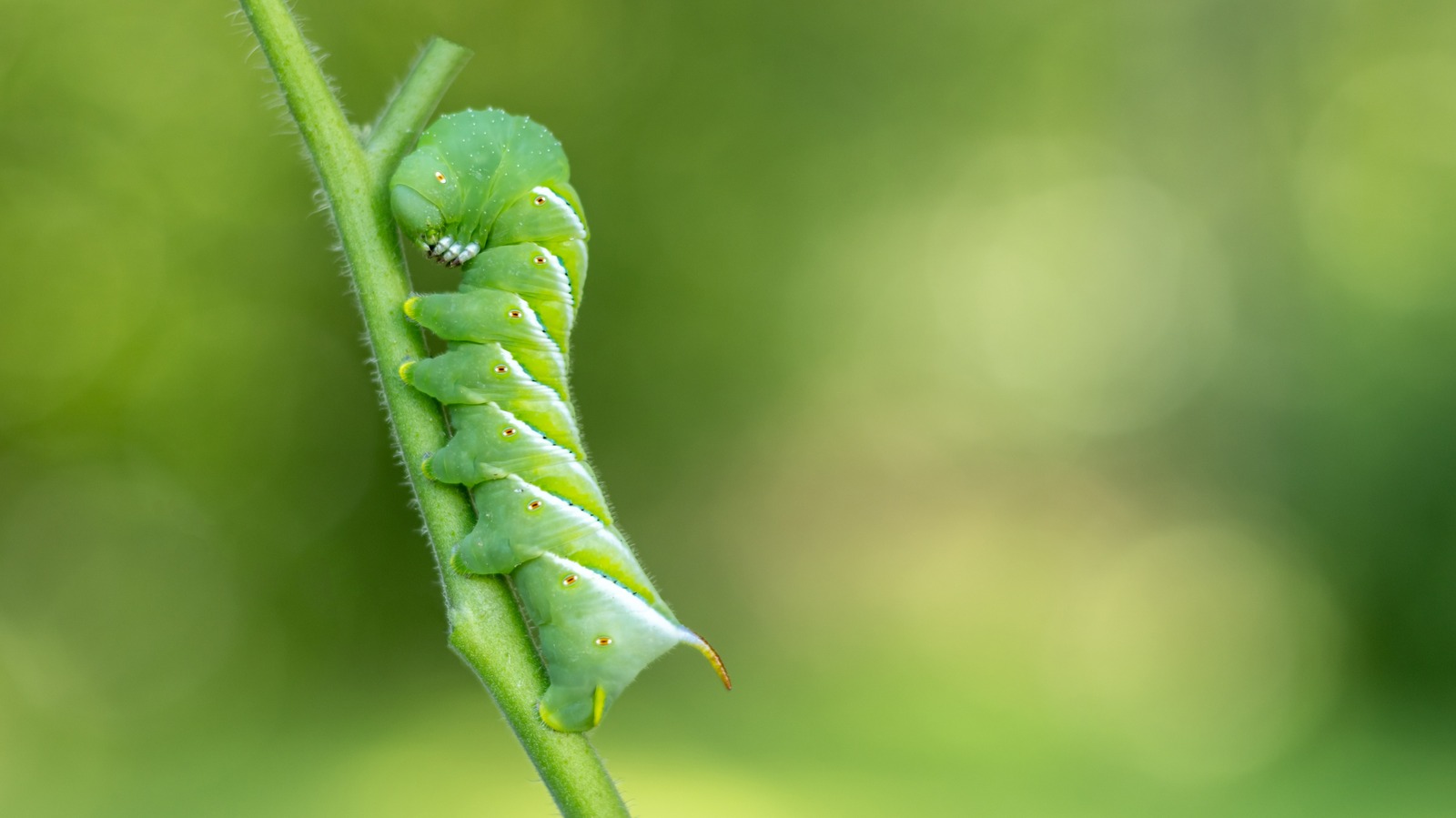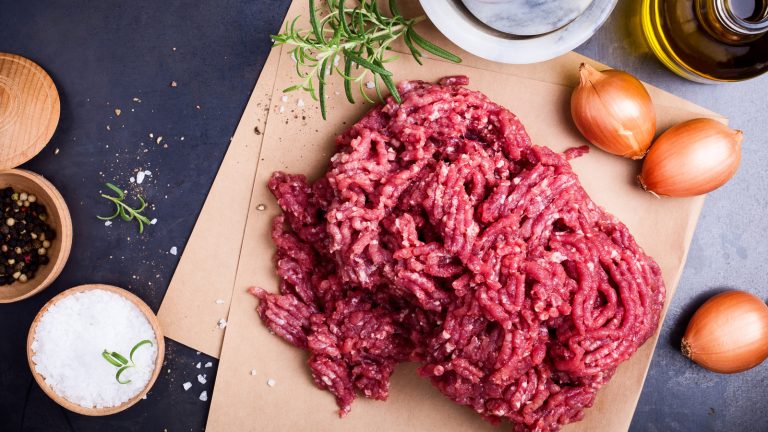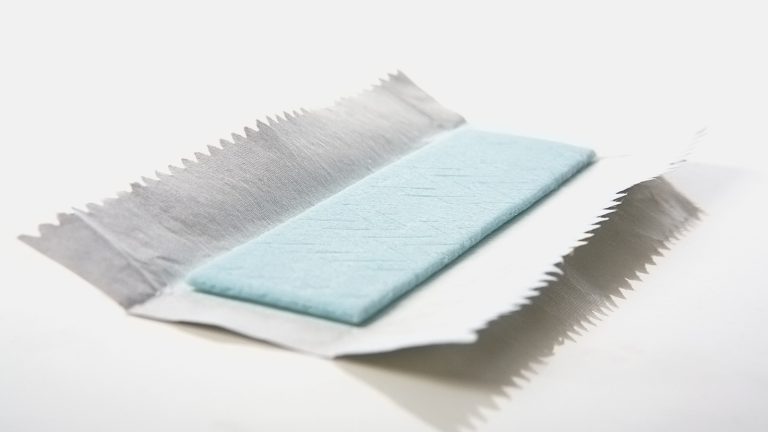We may receive a commission on purchases made from links.
If you want to live a long and healthy life, eating veggies is a good way to go. Yet it’s hardly a straight road. From ensuring you’re getting enough high-protein vegetables to using the all-important “ground-up” rule for sauteing, there are plenty of mistakes to be made … and that starts when your veg is still in the ground.
Truly, when you’re a beginner at vegetable gardening, there are so many unknowns. One of the biggest is how on earth to deal with all the pests. “Pests in a vegetable garden can become a real challenge,” says Lucia Hechem, agricultural engineer and featured expert in the educational series “Plant Hero Academy” from the PlantIn App. “Many insects love tender vegetables just as much as we do. Fresh green leaves, new shoots, and sweet fruits are simply irresistible.” Plus, she adds, you can’t use any old product to get rid of them when you’re growing food for human consumption.
Moreover, says Tony King, pest control expert at The Pied Piper Pest Control, “Getting rid of pests in a vegetable garden is so difficult because you are dealing with an open system that is in continuous interaction with the surroundings.” Outdoors, you’ll draw insects, rodents, and small animals from all around because everyone is attracted to water, food, and shelter.
Even worse, says Michael Clarke, founder of Yardwork, “Many pests have short life cycles and reproduce quickly, which makes it hard to eliminate them once they’re established.” But take heart: There is hope. Here are 16 effective hacks for ridding your garden of pests.
Plant guardian plants
One of the main problems with pests in a vegetable garden is that you simply can’t eliminate everything that attracts them. “A garden is a living ecosystem that is impossible to keep totally under human control, and pests will always find a way in,” says Nicole Carpenter, president of Black Pest Prevention. Lindsey Chastain, homesteader and founder of The Waddle and Cluck, agrees: “You can’t control the weather, wildlife, or insects. The best you can do is prepare and be diligent about checking your plants.”
That requires a lot of work, but at least you have options. Indeed, says Lucie Bradley, gardening and greenhouse expert at Easy Garden Irrigation, “Some simple, common-sense strategies will mean you don’t need to turn to chemical solutions to prevent pests from damaging your crops.” If you’re just starting a summer vegetable garden, there is one smart hack that can increase your chances of success from the beginning: guardian plants.
Early detection is among the best hacks for controlling pests, Lucia Hechem says, and planting what she calls guardian plants can help you do that. Rosebushes, for instance, are “highly sensitive to pests and diseases like aphids, whiteflies, leaf miners, and powdery mildew, and they often show symptoms before your crops do.” By keeping an eye on those roses, you’ll have a head start on anything that might soon affect your veggies.
Watch for ants
Another early detection hack is to watch for ants in your vegetable garden. While they aren’t necessarily a problem on their own, Lucia Hechem says, they can be a harbinger of infestations. “If you see them going up and down your plants, it usually means they’re farming aphids or mealybugs for their sugary secretions,” she says. “They protect these pests, which makes it harder to get rid of them.”
That’s bad news, says Sara Rubens, certified garden coach and founder of Seed to Sanctuary. “Species like aphids … can multiply rapidly, especially in warm conditions, turning a minor issue into a full-blown infestation within days,” she says. If you don’t have natural predators in your yard in abundance, problems may develop seemingly overnight.
Happily, Hechem says, you can address ants pretty easily. Sprinkle cinnamon or diatomaceous earth around the base of the plant and prune any leaves that touch walls or other plants because ants use them as bridges.
Create light and space
One of the best hacks for keeping your vegetable garden pest-free is to ensure plenty of light and space around each plant. “Before you even plant, consider placement,” Lindsey Chastain says. “If you plant too densely, it creates the perfect hiding places for pests and fungus. Plus, by planting a bit more spaced out, you improve airflow and circulation.” This helps you address common non-bug problems, such as powdery mildew and mold.
If you don’t have enough airflow and sunlight yet, you should create some by pruning. Make sure to use sharp tools, such as the Gonicc Professional Premium Titanium Bypass Pruning Shears. If you have a real infestation or pathogen, sterilize your shears with rubbing alcohol or bleach before pruning and in between each cut to minimize the chance of passing it on. Greater visibility, combined with the fact that many pests dislike sun (looking at you, slugs), will solve many issues.
Spray neem oil
Neem oil is a natural pesticide made from neem tree (Azadirachta indica) seeds. “It has been found to be effective on over 200 species of insects including aphids, caterpillars, leafhoppers, mealybugs, mites, scale insects, thrips, and whiteflies,” Lucie Bradley says. “Neem oil is great to use as a natural way to control pests on plants as it kills the insects no matter what stage of growth they are at: egg, larva, or adult.” Plus, you can use it any time of the year.
Why is it so effective? “Neem oil contains azadirachtin, which disrupts the hormonal system of the insect, making it difficult for the insects to grow and reproduce,” Tony King says. To use, he combines 1 to 2 tablespoons of cold-pressed neem oil (such as Neem Bliss Pure Neem Oil Concentrate) with a teaspoon of mild liquid soap in a gallon of water. Funnel this mixture into a squirt bottle and spray it on the leaves, remembering to get the undersides.
There are a few caveats. First, spray in the early morning or late evening. Otherwise, the plant’s leaves may burn. Second, avoid plants with delicate or wispy leaves, like peas or herbs. Lastly, watch out for bees and other friendlies when spraying.
Use dish soap
While you can use dish soap in conjunction with neem oil, you can also use it on its own without buying any extra ingredients. Indeed, it’s one of the most effective vegetable garden hacks. “The detergents in dishwashing soap … affect insects, washing off any protective coating on their bodies so they dry out,” Lucie Bradley says. “This is why creating a spray of soapy water to spray onto any soft-bodied insects like aphids, thrips, mites, and whiteflies works well.” As a bonus, you get to use your dishwater suds to good purpose.
Again, use this strategy with caution. Don’t let soap build up by repeated dousing without clean water in between. Don’t apply sudsy water without testing it on one leaf of the plant first to see how it reacts. Don’t use it in hot weather, which can lead to leaf burn. And as always, watch out for beneficial insects such as bees, butterflies, and ladybugs.
Spread diatomaceous earth
Diatomaceous earth, or DE, is another excellent vegetable garden pest removal strategy. “Made from fossilized algae, it works by physically damaging the exoskeletons of insects like aphids, slugs, beetles, and ants, causing them to dehydrate and die,” Sara Rubens says. More specifically, Tony King explains, DE is made from fossilized diatoms, which have a protective coating made of glass that cuts into insects. This may seem grim, but it’s a good strategy if you want to avoid harming friendly fliers above ground level, such as bees.
“Because it’s not a chemical pesticide, it’s safe to use around edible plants,” Rubens adds. Just be sure to use food-grade DE. You can get 10 pounds of food-grade diatomaceous earth for $35, and it is well worth the investment. Also, note that you have to reapply after rain or heavy dew, both of which wash it away. Always spread a thin layer, Nicole Carpenter advises, rather than mounding it in piles.
Be vigilant about weeding
Ah, weeding. The thing gardeners uniformly avoid at all costs. But there’s simply nothing else for it: It’s one of the best vegetable garden hacks out there. “Weeds not only compete for water and nutrients, but they also provide shelter for many pests and diseases,” Lucia Hechem says. “Keeping the garden clean improves air circulation and reduces hiding spots, making it harder for pests to thrive.” Like pruning, it also creates more light and gives your veggies room to breathe. “Plus, some weeds can carry diseases, so regular weeding is a simple but very effective strategy,” she says.
Tony King recommends gardeners weed once a week, targeting common pest hosts such as pigweed or lamb’s quarters. It’s especially effective after a rain when the soil is soft, he says, and will minimize the chances of reseeding. If you want to make weeding easier, this writer highly recommends The Original Hori Hori Namibagata Japanese Stainless Steel Weeding Knife and a foldable, adjustable step stool with a non-slip platform.
Use companion plants
Companion planting, the practice of growing two or more plants in close proximity, can be a helpful strategy for preventing pests in your vegetable garden. “Planting marigolds near tomatoes, for example, can help keep nematodes and aphids away,” Lindsey Chastain says. “Basil helps keep flies and mosquitoes away. Planting nasturtiums can lure aphids away from cucumbers and squash.”
Companion plants can also enhance one another’s growth. “Certain plant pairings improve each other’s productivity by sharing nutrients, providing support, or offering shade,” Sara Rubens says. “For example, beans fix nitrogen in the soil, benefiting nearby plants, while squash shades the ground to reduce weeds and retain moisture.” This also helps you maximize land when you’re trying to grow both summer vegetables and root veggies (later, you can enjoy the fruits of your labor by avoiding the most common mistakes when roasting vegetables).
As hacks go, companion planting can be difficult to get right, so experiment. For instance, some varieties of tomatoes are easier to grow than others, so you may wish to get tried-and-true brands and leave the experimentation to which companion plants you choose, at least at first.
Intercrop multiple veggies
Intercropping or interplanting is related to, but different than, companion planting. The idea is that rather than driving pests away using deterrent species, you simply make it harder for them to spread by planting crops that attract different pests. Among vegetable garden hacks, this is one of the most beneficial in a couple of ways.
“It’s a great way of making the best of limited space as you can select two crops which won’t compete with each for space, such as growing a tall upright crop like climbing beans with a short, ground cover crop such as squashes,” Lucie Bradley explains. Plus, she adds, by spreading crops out, you reduce the jungle-like effect of, say, a bunch of tomatoes or broccoli all in one place, which will create tons of bridges across which pests can spread.
Attract beneficial insects
Other hacks for controlling pests include attracting good insects rather than simply addressing bad ones in your vegetable garden. “Ladybugs, lacewings, and hoverflies prey on common garden pests,” Michael Clarke says. Parasitic wasps are also beneficial. “These beneficial insects help naturally regulate pest populations, reducing the need for chemical sprays. … You can attract them by planting flowers like dill, fennel, alyssum, and yarrow.”
These “soldiers” can do more to help than you might think, Lucie Bradley says. For instance, a single ladybug larva will eat about 50 aphids a day, which totals about 5,000 in their lifetime. They love scale insects, mites, and whiteflies as well. If you don’t have much luck attracting them with plants, you can simply buy predatory insects, such as the Clark&Co 3000 live organic ladybugs option. But be careful, Tony King cautions: Avoid broad-spectrum insecticides, which kill the good guys as well as the bad guys.
Use sticky traps
Sticky traps are one of the most low-rent yet high-payoff pest control hacks for your vegetable garden. They cost very little, but they yield great results. For instance, Nicole Carpenter says, sticky paper such as Tanglefoot Tangle-Trap Sticky Coating or Catchmaster Max-Catch Mouse & Insect Glue is “one of the best ways to keep ants off fruit trees. … Wrap them with sticky tape near the base so that ants and other crawling pests cannot reach the fruit and eat it.”
You can also use it near your veggies. “I hang yellow sticky cards slightly above the plants, particularly around crops such as squash, peppers, and tomatoes,” Tony King says. “The cards attract flying insects with the color and trap them on contact.” Although it won’t result in full pest control, he says, it can slow down the infestation and warn you when one is coming. If you have problems with whiteflies, fungus gnats, thrips, or aphids, Lucia Hechem says, this can really help. However, she adds, “It’s best to replace them frequently and keep them away from areas where pollinators are present.”
Hand-pick pests off
One of the more disgusting vegetable garden hacks for some people involves picking pests off by hand. Gross it may be, but it is quite useful, requiring no inputs other than time. “Even if it’s not the most sophisticated method, removing insects by hand, such as caterpillars, slugs, or beetles, is a quick and effective way to control them,” Lucia Hechem says. “Conducting a daily check and removing them early in the morning or at dusk can help prevent significant damage and prevent them from reproducing.” Simply drop them into a container of soapy water, or better yet, Lindsey Chastain says, “Feed them to your chickens if you have some.”
This strategy is especially effective if your garden is small and you don’t have that many plants to monitor. However, with enough time (or help from your children, as is this writer’s approach), it’s a very useful tool in the pest control toolkit. And it has another important benefit, Tony King says: “It also gives me a good opportunity to examine plant health and spot issues before they can get a chance to spread.”
Set up a beer trap for slugs
You read that right: Beer traps are one of the best hacks for keeping your vegetable garden free from pests like slugs and snails. This writer’s mother used them all the time in her yard, and they worked. “These pests are attracted to the yeast in beer,” Sara Rubens says, “and when they crawl into a shallow container filled with beer that’s sunk into the soil, they often fall in and drown.” This is especially effective for crops such as lettuce or strawberries or in small gardens in general.
Do note that there are some downsides, one of which is that traps will need to be cleaned out regularly, and it is a gross chore. (Childhood memories are flooding back over here.) Plus, Rubens says, they only attract pests that are already nearby, so you may need additional strategies for slugs and snails: “handpicking, barriers like copper tape, and encouraging natural predators such as birds, frogs, and ground beetles.”
Ensnare fungus gnats with apple cider vinegar
Next up on our list of amazing vegetable garden hacks: good old apple cider vinegar, which is excellent at dealing with fungus gnats. “If tiny black flies come out when you water, it’s probably fungus gnats,” Lucia Hechem says. “They thrive in moist soil with lots of organic matter, and their larvae hang out right in the top layer.”
To deal with an infestation, first let the topsoil dry all the way. You can sprinkle a layer of diatomaceous earth on top around the plant to prevent adults from laying additional eggs. Next, prepare a small dish of apple cider vinegar with a drop of dish soap, Hechem says, which will lure them to their doom. This also works for fruit flies in the kitchen.
Don’t leave pest magnets around
Another great way to reduce pests in your vegetable garden is to get rid of any pest magnets. “If you leave piles of leaves, overripe fruit, or standing water, you literally invite pests to your garden,” Nicole Carpenter says. “It gives them all they need: food, water, and shelter.” If you can instead eliminate standing water and extra plant debris, plus use trash cans with lids, you can get rid of up to 70% of your infestations. It is pretty easy, really.
Make sure to clean out dead plant debris from the base of plants, which is another great place for pests to hide, and keep compost heaps under control. You should turn your compost regularly so that the fresh organic matter is on the inside, not lying around on top attracting pests.
Attend to the health of your garden
“One thing that’s really important and easy to forget is how crucial soil health is to pest management,” Tony King says. “Healthy soil produces vigorous, healthy plants that are much more able to resist pest attacks.” Like all the other hacks, this is less a one-off than a way of life.
So how can you improve soil health in your vegetable garden? “I encourage gardeners to amend their soil from time to time with compost, worm castings, or well-rotted manure to create a healthy population of beneficial microbes,” King says. “These microbes allow plants to absorb nutrients more efficiently and strengthen their immune systems.” You should avoid over-fertilizing with high-nitrogen fertilizers, though. Large additions all at once encourage plants to send up a bunch of tender growth, which attracts aphids and leafhoppers.
You should also rotate your crops, switching up which veggie families you plant where. That way, diseases and pests don’t develop in those areas. “Be aware of the ecosystem of your garden and remain proactive instead of reactive,” King says. Check your plants often, keep the whole yard healthy, and respond when necessary.





